ProSafe credit reference agency retrieves data from bank and other credit providers where customers have missed payments or gone into default. The data isvery sensitive and fed directly into a Blue Prism work queue via a web service. Blue Prism process must process the data within 4 hours. The Blue Prism solution runs continuously and each case takes approximately 30 seconds to process. It is expected thatan average of 10,000 cases per day will be required and up to 10 Blue Prism robots are available. The Blue Prism solution is sown below:
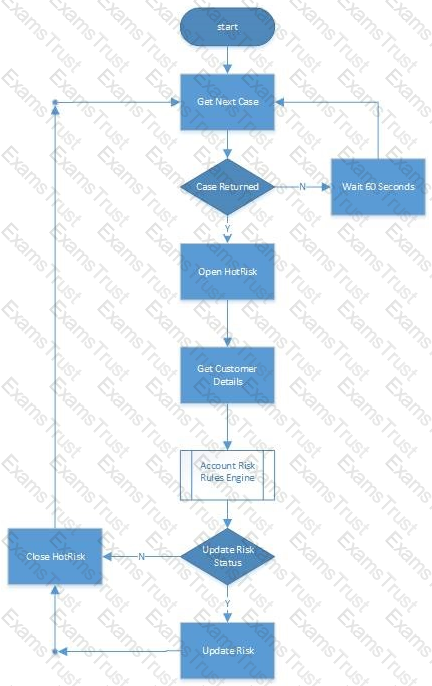
For each case of the process will access the customer account in the HotRisk system and, where an account exists, harvest the data which will be fed along with the Work Queue data into a rules engine. The rules engine is a Blue Prism process that does not interact with any target system. It merely consumes data and, via a complicated series of decision and choice stages, determines the new customer risk factor.
There is to be no scheduler used. Instead the Process Controllers who work in shifts to provide 24 hour support will stop and start process instances in line with Work Queue volumes.
As a Blue Prism process solution designer, who is reviewing the solution, which of the following would concern you? (Choose three.)
Consider the following steps for a theoretical manual process.
It is imperative that notes are applied to System X and Y, regardless of whether System Z is updated or not, what could the process do?(Choose two.)
SanQuest Bank’s call center regularly receives requests fromcustomers for the exact amount required to clear their loan. This is a complicated calculation that is prone to human error. The bank has decided to use Blue Prism to perform the calculation and is considering amending its front end system OneBase to allowa user to click a button to request a Loan Consolidation Amount.
They plan to communicate with Blue Prism using web services. Consider the two proposed designs:
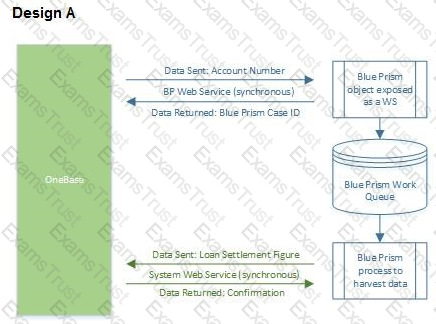
Here a Blue Prism object is exposed as a web service. OneBase calls this service providingthe account number. The Blue Prism object add the case to a work queue and then returns the Case ID to complete the web service call.
A Blue Prism process works the queue and harvests the data required to perform the calculation. The same Blue Prism process calls a OneBase web service and provides the load settlement figure. OneBase completes the web service call by returning a success flag.
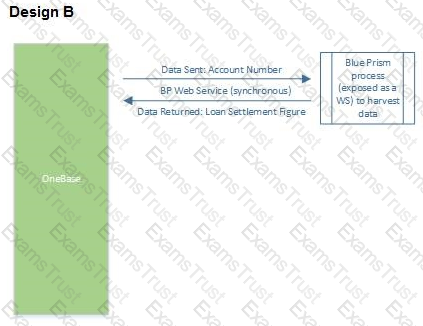
Here the Blue Process that harvests the data is exposed a web service with the loan settlement figure as an output. OneBase calls the web service and provides the account number. The BluePrism process harvests the data and completes the web service call by providing the loan settlement figure.
Considering Blue Prism best practice which of the following statements is correct?
The status of a Work Queue can be used as a method of recording that work has been done so far on a Work Queue item.
Please consider the following statements:
1. For MI, to easily see how far an item has beenworked.
2. To aid manual working of exceptions, providing the Item Status can inform staff what work is still outstanding on an item that needs manually.
3. To enable Work Queue items to be safely retried, a process can use the item status to know which updates have already been performed so that they are not repeated.
4. To record the Customer’s Surname
Which of the following accurately describes best practice when work is sourced from an application’s workflow system?
Pacific West Banking has a payments process that automatically receives pending payments from multiple regions into their payment system (Paytex).
Paytex contains a queue of cases awaiting payment. When processing the case manually an agent must use two other systems, the core banking system (DataPlus) and online account checker (FireWire).
The manual processing must perform the following steps:
A proposed Blue Prism solution with the following properties has been created to automate the payment processing:
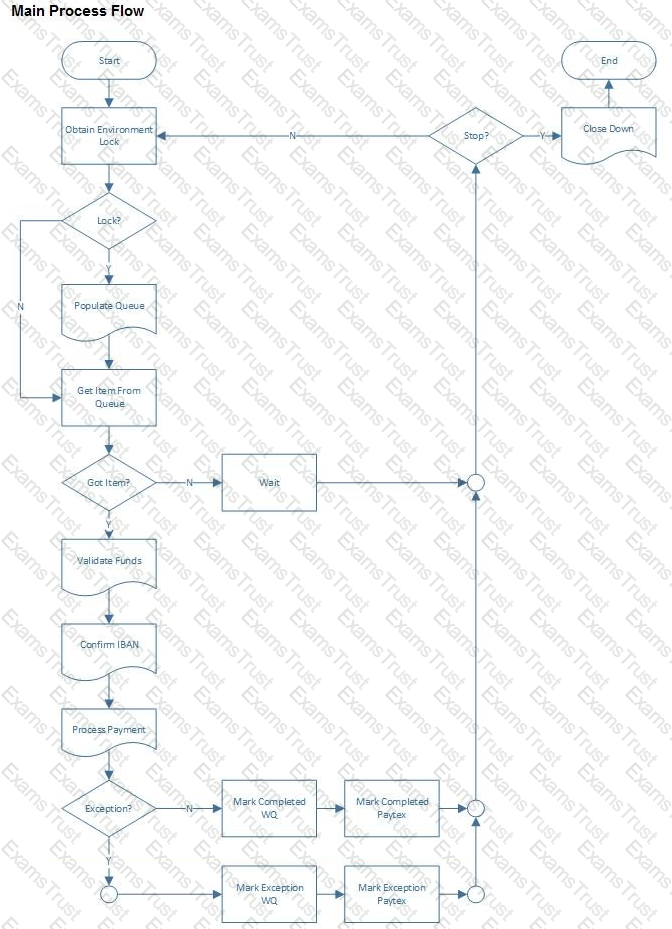
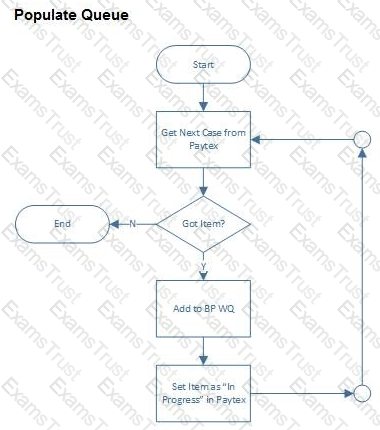
Which of the following are correct? (Choose three.)
A process definition document has been produced for a process that interfaces with two applications: FirstApp and Customer Information (CI). The process requirement is to perform data extractionfrom FirstApp before performing a number of steps in the CI application.
It is estimated that to perform the daily case volume within SLA’s will require 10 robots. Average case time is approximately 10 minutes, with the FirstApp steps requiring only 1 minute to perform.
The client has a limited number of licenses for the FirstApp application and is reluctant to use 10 of these licenses to automate the process.
Which of the below is a valid design option for the project?
A retail bank has promoted 2 Blue Prism processes to production:
1. Email poller
2. Customer onboarding
3. Direct DebitCancellations
One instance of the email poller process will run 24/7 feeding work queues for the other two processes.
Three instances of the Customer onboarding process will run between 6am and 11pm each day on three separate VMs.
One instance of the Direct Debit Cancellations process will run between 6am and 4pm each day on the same VM as the Email poller process.
What is the maximum number of Blue Prism licenses that will be consumed each day?